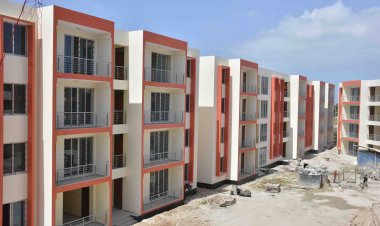Factors Influencing Lower Population in Coastal Cities Compared to Inland Cities in Africa
Some coastal cities like Lagos, Cairo, and Cape Town have experienced rapid urbanization, whereas many others have relatively lower population densities compared to their inland counterparts.

Coastal cities and inland cities in Africa exhibit distinct variations in population size and growth rates. While some coastal cities like Lagos, Cairo, and Cape Town have experienced rapid urbanization, many others have relatively lower population densities compared to their inland counterparts. Some factors that contribute to the lower population in coastal cities compared to cities located inland in Africa include:
1. Historical factors:
Historical circumstances have played a crucial role in shaping the population patterns of African cities. Many inland cities in Africa were historically established as administrative, political, or economic centers. These cities often housed governmental institutions, trade hubs, and centers of production, attracting people from surrounding rural areas. In contrast, coastal areas were often characterized by challenging geographical features, such as swamps, mangroves, or difficult access to the sea, which hindered their development and limited their population growth.
2. Resource distribution:
Inland cities in Africa often benefit from favorable resource endowments, such as fertile soils, mineral deposits, or water sources. These resources provide opportunities for agriculture, mining, and other economic activities, attracting people seeking employment and livelihoods. Coastal areas, on the other hand, may have limited access to freshwater or arable land, making them less attractive for settlement and economic development.
3. Geographic constraints:
Coastal cities in Africa frequently face geographic constraints that limit their capacity for population growth. Many coastal areas are characterized by rugged coastlines, which restrict the availability of suitable land for urban expansion. Additionally, low-lying coastal zones are prone to flooding and erosion, making them less suitable for large-scale urbanization. In contrast, inland cities often have more favorable topography and larger land areas, allowing for the establishment of extensive urban infrastructure and accommodating larger populations.
4. Economic opportunities:
Historically, inland cities in Africa have been strategically located near major trade routes, natural resources, or agricultural production areas. These factors have facilitated economic growth and attracted investments, resulting in the emergence of vibrant urban centers. Coastal cities, despite their potential for maritime trade and fishing activities, may face challenges related to infrastructure, transportation, and connectivity, which can limit economic opportunities and, consequently, population growth.
5. Infrastructure and connectivity:
Inland cities often benefit from better infrastructure networks, including roads, railways, and airports, which facilitate trade, transportation, and communication. These infrastructure developments enhance the connectivity of inland cities with other regions and countries, making them more accessible and attractive for businesses, job seekers, and migrants. Coastal cities, particularly those with limited infrastructure investments, may face barriers to connectivity, which can hinder population growth and limit their capacity to attract people.
Coastal cities in Africa generally have lower population densities compared to inland cities due to a combination of historical, geographic, economic, and infrastructural factors. Despite the potential for maritime trade and other coastal resources, challenges such as geographical constraints, limited resource distribution, and inadequate infrastructure have limited population growth in these areas. However, it is essential to note that there are exceptions to this trend, with certain coastal cities experiencing rapid urbanization and population growth. Understanding the factors that influence population distribution is crucial for effective urban planning and sustainable development in Africa's coastal and inland regions.
If you have a real estate press release or any other information that you would like featured on the African Real Estate Blog Post do reach out to us via email at [email protected]


























![7 Famous Architectures in Africa [PHOTOS]](https://realestateblogpost.com/uploads/images/2023/05/image_380x226_646c9c2bd8642.jpg)





